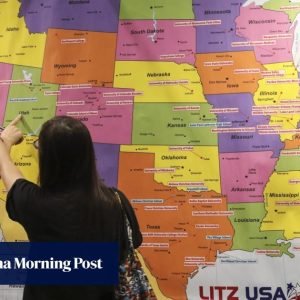
- Matthew Limb,
- Jacqui Wise
Learning that the first 10 doctors in the UK to die from covid-19 were of ethnic minority origin sent “shockwaves” through this community, a senior consultant psychiatrist told the UK Covid-19 Inquiry on 8 October.1
JS Bamrah, a member of the Federation of Ethnic Minority Healthcare Organisations, which was formed during the pandemic, said that covid mortality and morbidity data intensified concerns over longstanding inequalities and the need to mitigate risks.
Voice not being heard
Bamrah said, “It didn’t seem as if our voice was being heard, although many of us were trying to shout from the rooftops. We said, ‘Look, there’s something going on here that shouldn’t be happening.’”
The federation wrote to Public Health England expressing concern at analyses of survival rates showing that people from ethnic minority backgrounds were more likely to get severe covid and that those who were infected were more likely to die than people of white British ethnicity. Bamrah said, “We didn’t feel enough was being done to give us the tools by which we could look after patients safely.”
He described concerns regarding the availability and suitability of personal protective equipment (PPE) and respirators and pulse oximeters not being standardised according to skin colour. The federation warned health officials and the General Medical Council about cases where staff were told that they would be disciplined if they asked for masks, even though without them they couldn’t work safely, Bamrah said.
“We know black and ethnic minority doctors and nurses are more likely to be disciplined or sacked or erased from the register,” he said. “That fear was there that we had to keep quiet under these circumstances, but there was every attempt to raise these issues with employers as well as higher up.”
Bamrah described how one medical consultant who received such a warning caught covid-19 and became very seriously ill and was away for 18 months without contact from the hospital—“the trust completely shut shop on her.” She had since returned to work elsewhere in the NHS, despite having long covid, a condition now affecting many staff who were not getting the support from employers that they should, he said.
Pre-existing inequalities linked to structural racism
Giving evidence on 10 October, Habib Naqvi, chief executive of the NHS Race and Health Observatory, said that higher rates of covid infection and mortality among ethnic minority healthcare workers than among their white colleagues should be viewed in the context of pre-existing inequalities caused by structural racism.2
The Office of National Statistics concluded that a large proportion of the excess covid-19 mortality risk in ethnic minority groups could be accounted for by factors such as living arrangements, comorbidities, and working in frontline care. But Naqvi added that it was important to look at the “causes of the causes of the inequalities.” He asked, “Why is it that ethnic minority staff are more likely to find themselves on the frontline and less likely to find themselves in managerial positions?”
Naqvi added that tackling pre-existing inequalities must be continuous and not reactive or temporary, so that the UK was “not on the back foot” when it came to future pandemics.
Discussing the first rapid review that the Race and Health Observatory carried out into pulse oximetry and the potential for inaccurate readings in patients with darker skins, Naqvi said, “There’s a fundamental point here with regards to representation or lack of representation in clinical trials. Where there is a lack of representation we often get products or devices that may not be suitable for the diverse population that we’re here to serve.”
Distressing experiences in antenatal and maternity
On 7 October witnesses described upsetting experiences among patients of antenatal and maternity care in hospitals during the early stages of the pandemic, highlighting sometimes inadequate communication and difficulties with how hospitals applied covid restrictions.3
In April 2020 Tamsin Mullen gave birth to twin boys prematurely, at 34 weeks, by caesarean section. They spent 31 days in a neonatal intensive care unit before being discharged home.
Mullen said that a change in covid rules in March 2020 meant that her husband, who had initially come with her to scanning appointments, had to wait in their car outside. This left him feeling “distressed” and “excluded,” while she herself was “very nervous” because of the “high risk” nature of the pregnancy, as she had a diagnosis of pre-eclampsia.
After the birth she was taken to a side room where she was on her own for 27 hours. Only one parent at a time could be with newborn babies, even after they had been moved to a single room away from other babies.
Mullen, who was giving evidence on behalf of 13 pregnancy, baby, and parent organisations, said that she questioned the policy with hospital staff. “The nurses said they didn’t understand it either; the matron’s hands were tied because the rules came from higher up,” she said. “We didn’t feel like we were being treated like parents. It was more like we were visitors. We didn’t feel like a mother and father to the children the way we should have done.”
Hard discussions with families over DNACPRs
Charlotte Summers, professor of intensive care medicine at the University of Cambridge, told the inquiry, “One of the most extraordinarily difficult parts of ICU care in the pandemic was that relatives had not seen how the patient had deteriorated.”
Giving evidence on 9 October,4 Summers said that discussions about “do not attempt cardiopulmonary resuscitation” (DNACPR) orders often had to take place over Zoom, making them very difficult, because conversations were “remote and disconnected.”
Heather Hallett, chair of the inquiry, said it had heard from a large number of bereaved families that they were not consulted about a DNACPR notice on their loved ones’ records.
Ganesh Suntharalingam, president of the Intensive Care Society, said that in a critical care situation where the medical staff were used to having such discussions such an occurrence would be very unusual. But he acknowledged that it could happen in different settings where there may be fewer people looking after a larger number of patients.
On 10 October the former president of Resuscitation Council UK, Jonathan Wyllie, told the inquiry that he had heard of one NHS trust implementing a blanket do not resuscitate order but had not seen the document itself. He said his charity had then released a very clear public statement that blanket DNACPR orders were not appropriate and should not be implemented.
Wyllie said that DNACPR notices should ideally be part of a wider conversation about advance care planning, through use of the ReSPECT form process,5 which creates personalised recommendations for a person’s clinical care and treatment in a future emergency.
Training in talking about DNACPR planning should be embedded in medical and nursing training, he added.
This article is made freely available for personal use in accordance with BMJ’s website terms and conditions for the duration of the covid-19 pandemic or until otherwise determined by BMJ. You may download and print the article for any lawful, non-commercial purpose (including text and data mining) provided that all copyright notices and trade marks are retained.








